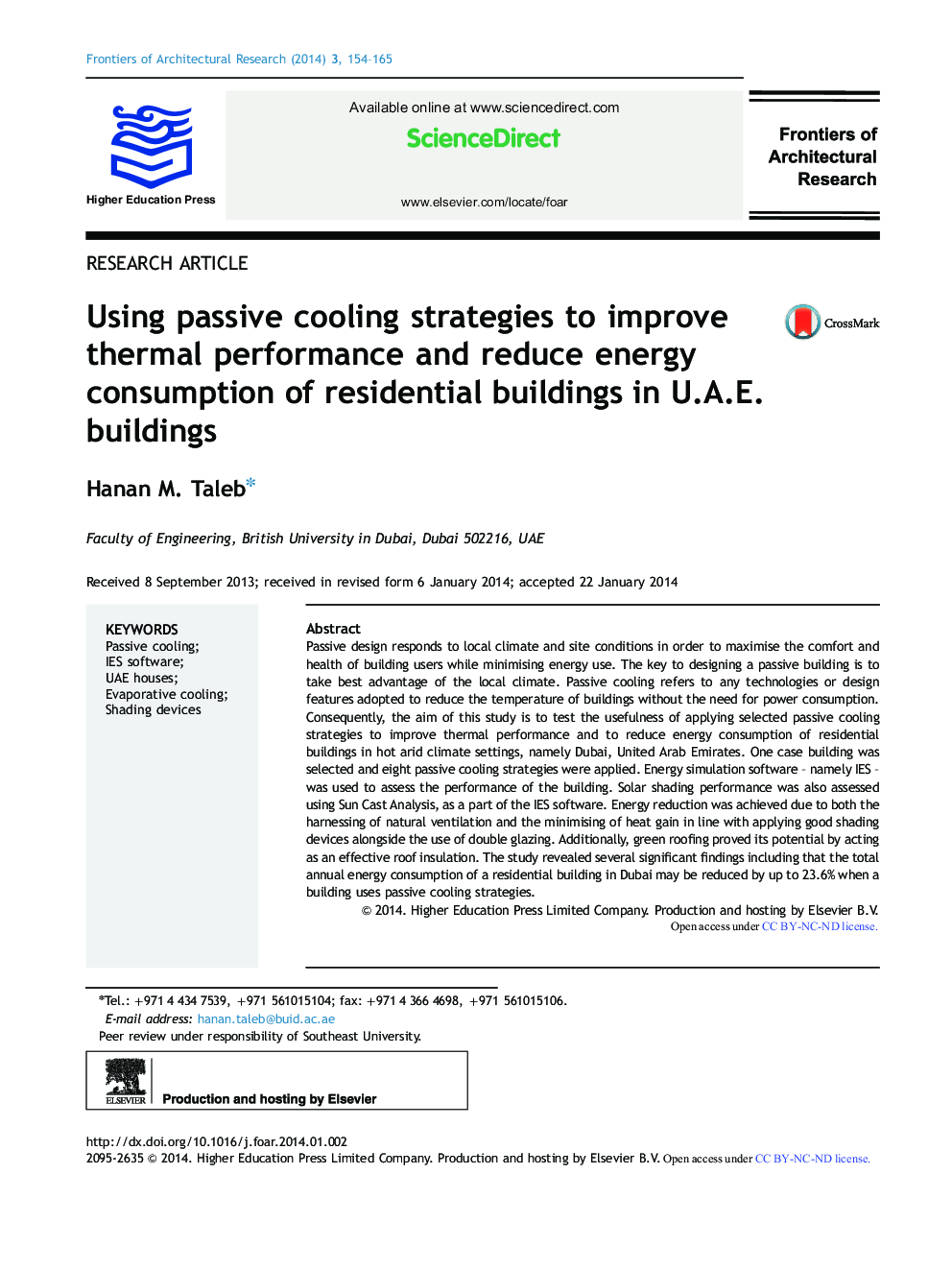| Article ID | Journal | Published Year | Pages | File Type |
|---|---|---|---|---|
| 270675 | Frontiers of Architectural Research | 2014 | 12 Pages |
Passive design responds to local climate and site conditions in order to maximise the comfort and health of building users while minimising energy use. The key to designing a passive building is to take best advantage of the local climate. Passive cooling refers to any technologies or design features adopted to reduce the temperature of buildings without the need for power consumption. Consequently, the aim of this study is to test the usefulness of applying selected passive cooling strategies to improve thermal performance and to reduce energy consumption of residential buildings in hot arid climate settings, namely Dubai, United Arab Emirates. One case building was selected and eight passive cooling strategies were applied. Energy simulation software – namely IES – was used to assess the performance of the building. Solar shading performance was also assessed using Sun Cast Analysis, as a part of the IES software. Energy reduction was achieved due to both the harnessing of natural ventilation and the minimising of heat gain in line with applying good shading devices alongside the use of double glazing. Additionally, green roofing proved its potential by acting as an effective roof insulation. The study revealed several significant findings including that the total annual energy consumption of a residential building in Dubai may be reduced by up to 23.6% when a building uses passive cooling strategies.
